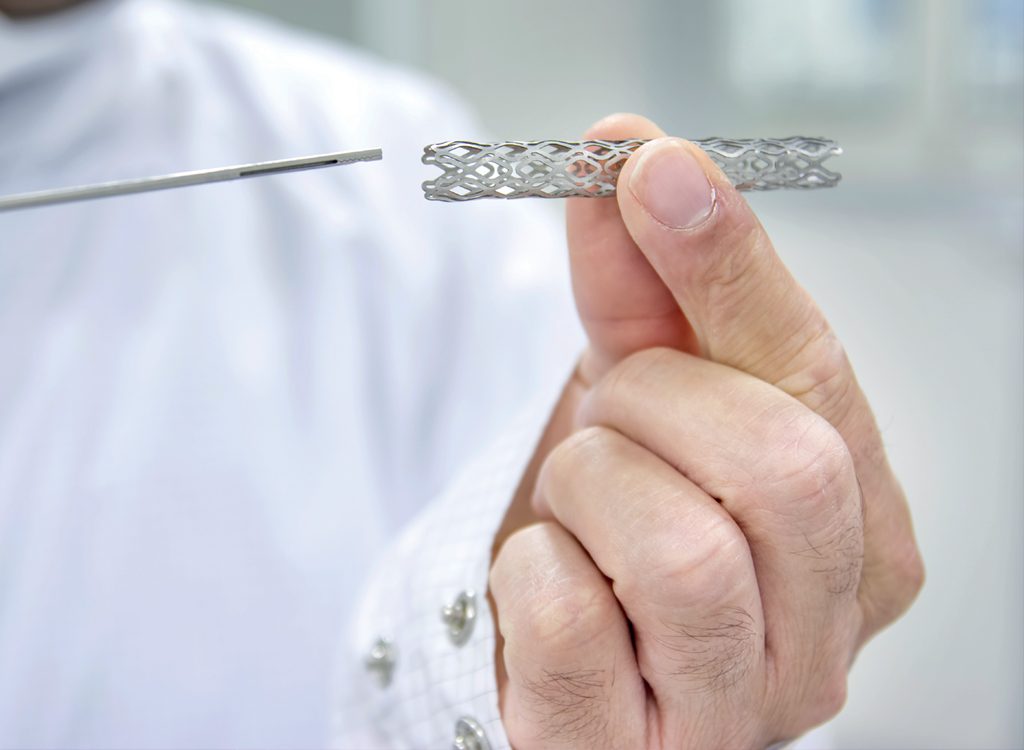
Once upon a time, a heart attack was almost certainly fatal, but medical advancements in various forms – from drugs and defibrillators to surgery and minimally invasive techniques – have greatly improved survival rates.
One of the leading causes of heart failure and chest pain is the narrowing of the coronary arteries. These arteries play an important role in bringing blood to the heart. When they become blocked due to a build-up of plaque or weakened due to disease, chest pain, heart palpitations or a heart attack can occur.
Building a Better Stent
In the 1970s, doctors developed a method to re-open these blocked arteries with a type of procedure known as balloon angioplasty. It involves threading a catheter – a long, thin tube – with a balloon-tip via a large artery in the inner leg or arm. Aided by an X-ray monitor, doctors guide the catheter towards the blocked heart vessel. The balloon tip of the catheter is then inflated against the blockage to expand the vessel so blood can flow to the heart again. The balloon is then deflated and the catheter is removed.
While this technique was successful in widening narrowed arteries, it had its drawbacks. Because there is no support to prop up the artery walls after the balloon is deflated, the artery re-narrows or even collapses in a small percentage of cases. About three in 10 coronary arteries treated with balloon angioplasty would narrow again over time.
In the 1980s, stents were introduced. Stents are small, expandable tubes made of metal wire mesh that can be mounted on the balloon and deployed during the angioplasty procedure. When the balloon is inflated, the stent locks into place to form a permanent scaffold to hold the artery open, even after the balloon is deflated and removed.
Over the last few decades, further improvements have been made to these stents. Drug-eluting stents, for instance, deliver controlled doses of medication to prevent scar tissue from developing and potentially clogging the artery all over again. Patients who have received stents will also need to take aspirin and an anti-clotting drug because there is a rare but serious complication called in-stent thrombosis. This refers to a condition when a blood clot forms in a stent after it is implanted.
New Innovations
Other innovations in stents are now in development. For instance, just last year, a new type of stent was approved by the American Food and Drug Administration. Instead of being made of metal, the stent is made of a special polymer that dissolves in the body over time. The stent also slowly releases a drug that will limit scar tissue growth.
Living Well After A Stent
While offering a new lease of life after a heart attack, patients who have had a coronary stent will need to be mindful of their health, as stents are not a cure for heart artery disease or its risk factors. This means patients need to make sustained lifestyle changes to manage their heart condition well and control risk factors such as diabetes, high cholesterol and high blood pressure.







